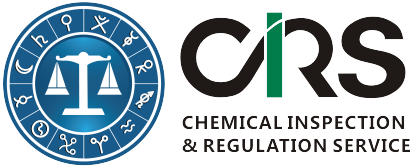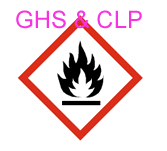
CLP Classification
The classification of a substance or mixture reflects the type and severity of the hazards of that substance or mixture, i.e. its potential to cause harm to human beings or the environment. EU manufacturers, importers and downstream users of substances and mixtures which are being placed on the market have the obligation to classify those substances or mixtures irrespetive of the tonnage involved.
NEW! CIRS will hold a 2nd free webinar with a focus on helping companies understand cut-off value and concentration limits in China GHS and CLP regulation on 23 August 2011. Read more..
According to CLP, chemical substances to be placed on the market have to be classified using one or both of the following approaches:
- Use of harmonized classifications (Annex VI of CLP);
- Self-classification by application of the criteria defined in CLP.
Mixtures will always have to be self-classified. They have to be assessed to elucidate whether they meet the criteria for classification. For this assessment any available harmonized classifications of the substances contained in the mixture must be taken into account.
Use of Harmonized Classifications
Companies can directly search harmonized classifications of the substances listed in the Annex VI of CLP.
All previously harmonized substance classifications under DSD have been converted into CLP harmonized classifications.
Annex VII to CLP provides a translation table for manufacturers, importers and downstream users to translate existing DSD or DPD classifications to CLP classifications. The translation table covers those hazards where there is a reasonable correlation between the DSD/DPD and CLP.
Self-classification
CLP has provided self-classification criteria that could be used to determine the harmonized classification of one substance or mixture.
- Self-classification of substance based on the available data
- Self-classification of mixture by using bridging principles
- Self-classification of mixture by calculation based on the classification of ingredient substances and their concentrations in the mixture(concentration limits and cut-off values).
How can we assist you in complying with CLP?
We provide end-to-end solutions to CLP compliance. We can help you classify your substances and mixtures according to CLP, notify the classification and labeling of your products to the C&L Inventory, prepare CLP compliant labels and the latest Safety Data Sheets.
Even though there are many guidance documents on how to prepare CLP compliant label, it is much easier and less time-consuming for you to outsource this job to us.
- Regulatory advice on the implications of CLP and REACH for your company;
- Re-classification and re-labeling of your substances or mixtures;
- Preparation of CLP compliant labels;
- Notification to the Classification & Labeling Inventory (C&L notification);
- New Safety Data Sheets in accordance with CLP & REACH;
About CIRS
CIRS a leading provider of comprehensive chemical compliance services for companies doing businesses in/with EU and China with a strong focus on chemical compliance.
With a strong presence in EU and China, CIRS has provided cost-effective regulatory support to over 3,000 companies while doing businesses in both the EU and China.
CIRS is the largest REACH only representative in the world. Since 2007, we have:
- pre-registered over 10,000 substances;
- acted as only representative for over 2,400 non-EU companies;
- served clients in more than 25 countries;
- registered over 145 substances to date;
- prepared over 1000 REACH SDS and CLP labels to date;
- submitted over 500 C&L Notifications to date;
CIRS is a recommended service provider by China Inspection and Quarantine Bureau, the US Mission to the EU and IDA. CIRS is also a member of Helsinki REACH Centre.
Contact
- Europe Office
Unit 1 Ardee Business Park, Hale Street, Ardee, Co. Louth, Ireland
Tel : +353 41 9806 916 | Fax : +353 41 9806 999
Email: service@cirs-reach.com


